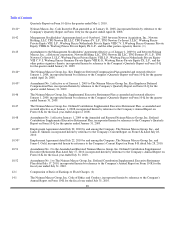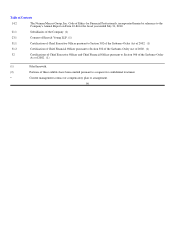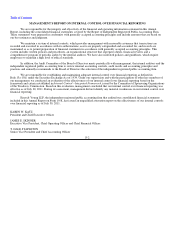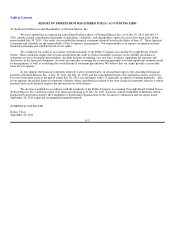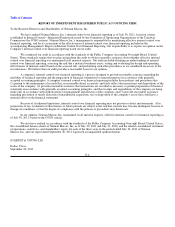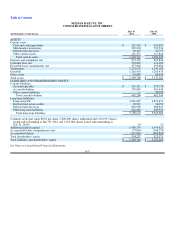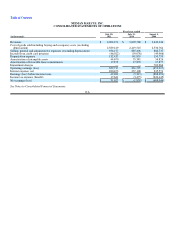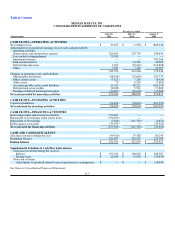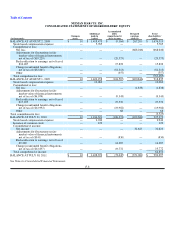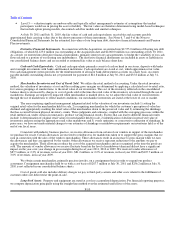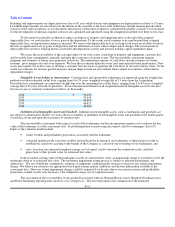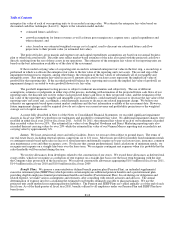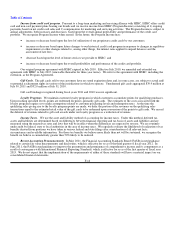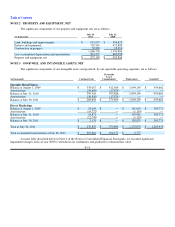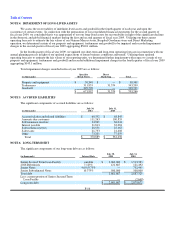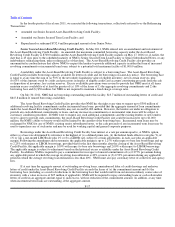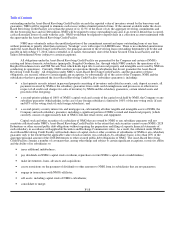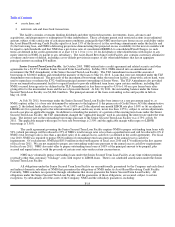Neiman Marcus 2010 Annual Report Download - page 105
Download and view the complete annual report
Please find page 105 of the 2010 Neiman Marcus annual report below. You can navigate through the pages in the report by either clicking on the pages listed below, or by using the keyword search tool below to find specific information within the annual report.
Table of Contents
NEIMAN MARCUS, INC.
NOTES TO CONSOLIDATED FINANCIAL STATEMENTS
NOTE 1. SUMMARY OF SIGNIFICANT ACCOUNTING POLICIES
BASIS OF PRESENTATION
The Company is a luxury retailer conducting integrated store and direct-to-consumer operations principally under the
Neiman Marcus and Bergdorf Goodman brand names. We report our store operations as our Specialty Retail Stores segment and our
direct-to-consumer operations as our Direct Marketing segment.
The Company is a subsidiary of Newton Holding, LLC (Holding), which is controlled by investment funds affiliated with
TPG Capital (formerly Texas Pacific Group) and Warburg Pincus LLC (collectively, the Sponsors). The Company's operations are
conducted through its wholly-owned subsidiary, The Neiman Marcus Group, Inc. (NMG). The Sponsors acquired NMG in a
leveraged transaction in October 2005 (the Acquisition).
Our fiscal year ends on the Saturday closest to July 31. Like many other retailers, we follow a 4-5-4 reporting calendar. All
references to fiscal year 2011 relate to the fifty-two weeks ended July 30, 2011, all references to fiscal year 2010 relate to the fifty-two
weeks ended July 31, 2010 and all references to fiscal year 2009 relate to the fifty-two weeks ended August 1, 2009.
The accompanying consolidated financial statements include the amounts of the Company and its subsidiaries. All
significant intercompany accounts and transactions have been eliminated.
ESTIMATES AND CRITICAL ACCOUNTING POLICIES
We make estimates and assumptions about future events in preparing our financial statements in conformity with generally
accepted accounting principles. These estimates and assumptions affect the amounts of assets, liabilities, revenues and expenses and
the disclosure of gain and loss contingencies at the date of the consolidated financial statements.
While we believe that our past estimates and assumptions have been materially accurate, the amounts currently estimated are
subject to change if we make different assumptions as to the outcome of future events. We evaluate our estimates and judgments on an
ongoing basis and predicate those estimates and judgments on historical experience and on various other factors that we believe to be
reasonable under the circumstances. We make adjustments to our assumptions and judgments when facts and circumstances dictate.
Since future events and their effects cannot be determined with absolute certainty, actual results may differ from the estimates used in
preparing the accompanying consolidated financial statements.
Fair Value Measurements. Under generally accepted accounting principles, we are required 1) to measure certain assets and
liabilities at fair value or 2) to disclose the fair value of certain assets and liabilities recorded at cost. Pursuant to these fair value
measurement and disclosure requirements, fair value is defined as the price that would be received upon sale of an asset or paid upon
transfer of a liability in an orderly transaction between market participants at the measurement date and in the principal or most
advantageous market for that asset or liability. The fair value is calculated based on assumptions that market participants would use in
pricing the asset or liability, not on assumptions specific to the entity. In addition, the fair value of liabilities includes consideration of
non-performance risk, including our own credit risk and the fair value of assets includes consideration of the counterparty's non-
performance risk. Each fair value measurement is reported in one of the following three levels:
• Level 1 — valuation inputs are based upon unadjusted quoted prices for identical instruments traded in active markets.
• Level 2 — valuation inputs are based upon quoted prices for similar instruments in active markets, quoted prices for identical
or similar instruments in markets that are not active, and model-based valuation techniques for which all significant
assumptions are observable in the market or can be corroborated by observable market data for substantially the full term of
the assets or liabilities.
F-9


